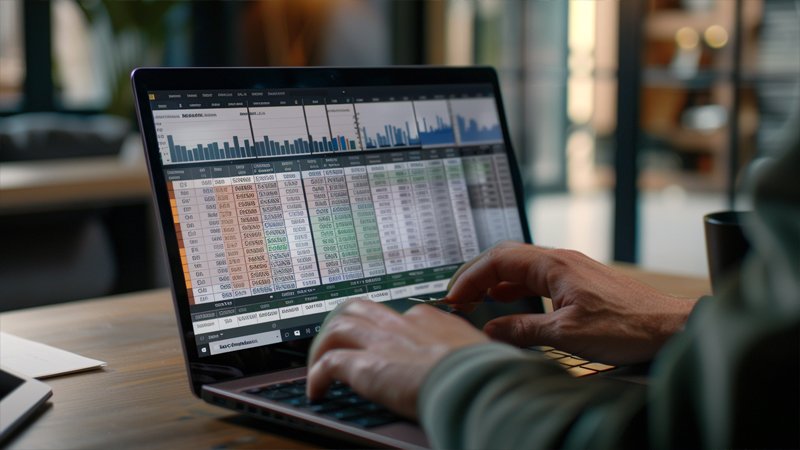
I once spent days juggling supplier quotes, feeling like my head might explode.
Supplier sourcing strategies help you pick reliable partners, optimize costs, and reduce the risk of supply chain disruptions.
Let's dig into the essentials.
What methods can you use to develop effective supplier sourcing strategies?
I like to start by defining clear goals: budget, quality, and timing.
Focus on precise requirements, research potential suppliers, and verify their credibility before finalizing any deals.

When I’m hunting for new suppliers, I create a simple checklist—think of it as my guiding star. I jot down product specs, acceptable price ranges, and any must-have certifications. This way, I know exactly what I’m seeking before I ever send out requests for quotes. I also do a bit of competitive benchmarking1, comparing how my peers select their suppliers and the standards they hold. Sometimes, trade fairs2 or online marketplaces (like Alibaba) help me spot fresh leads. If I stumble onto a company with poor reviews or incomplete profiles, that’s a major red flag.
A big part of developing effective strategies is mapping out potential pitfalls. For example, if a supplier’s lead times are consistently slow, can you accommodate that, or should you look elsewhere? Or if they offer a rock-bottom price, I wonder if they’re cutting corners. It's about finding that sweet spot between cost and reliability. I’ll even ask for references or case studies—any real-world proof they can deliver. Once I have a shortlist, I might request a small batch order first. This test run reveals whether the supplier communicates well and meets deadlines. If all goes smoothly, I’ll ramp up orders, feeling more confident about the partnership. Because at the end of the day, a good strategy isn’t just about snagging the cheapest price—it’s about forming dependable, win-win relationships that keep your business running like a well-oiled machine.
How can data analysis optimize your supplier selection process?
I learned to crunch numbers when I noticed cost overruns creeping up.
Use metrics—like delivery timeliness, defect rates, and pricing trends—to rank and refine supplier choices.

Data analysis can sound daunting, but it’s basically your compass, steering you toward better decisions. First, I gather info from each supplier: average lead times, quality scores, or maybe how often they meet promised shipping dates. Once everything’s on a spreadsheet, patterns jump out. Maybe one supplier’s quality is solid, but they’re always late by a week. Another might be super fast, but half their batches need rework. By comparing these metrics, I can see who aligns best with my priorities—whether that’s speed, consistency, or cost control.
Sometimes I track historical pricing data3 too. If a supplier’s prices keep rising without explanation, I might investigate alternative partners. Or if the global price of a key raw material dips, but my supplier’s invoice doesn’t reflect that, I’ll ask questions. Data analysis can also help me set realistic benchmarks—like aiming for a defect rate under 2% or wanting 90% of shipments on time. If a supplier constantly falls short, I’ll either push for changes or move on.
Digging into these stats also lets me forecast future needs. For instance, if I know a busy season is coming, I’ll check which supplier historically ramps up smoothly. This means fewer last-minute surprises. And while number-crunching can’t guarantee perfection, it lowers the odds of guesswork leading me astray. I’m no math wizard, but a few well-chosen metrics and a clear sense of what matters—like reliability or cost-efficiency—can transform a messy pile of quotes into an organized system. In a world where margins are tight, this edge could be the difference between thriving or barely making it through each quarter.
How does diversifying your supply chain help in reducing risks?
I once relied on a single supplier—until a factory fire halted everything.
Using multiple suppliers spreads out risk, so disruptions don’t completely stall your operations.

I learned this lesson the hard way. My primary factory shut down unexpectedly, and I had zero backup. Orders piled up, customers complained, and I scrambled for a quick fix. That chaotic month taught me the power of diversifying4. Instead of putting all your eggs in one basket, you split your orders among different suppliers or even different regions. Sure, it might mean a bit more coordination, but you’ll thank yourself if disaster strikes one of them.
Diversity also helps you weather cost fluctuations. Let’s say a region experiences a labor shortage or raw material prices spike. If you have an alternative supplier located elsewhere, you can shift part of your volume, potentially dodging those rising costs. You can also compare performance metrics—maybe one factory excels in smaller, custom batches while another’s better for large, uniform orders. If a new project emerges, you’ll already know which partner can handle it best.
It’s not just about emergencies, though. Diversification fosters healthy competition5. When suppliers know you have other options, they may offer better terms to keep your business. And if you want to test a new product, you can try a smaller run with one supplier without upsetting the broader supply chain. Overall, you gain agility—able to pivot if markets shift or new opportunities arise. For me, the peace of mind alone is worth it. Now, if one part of the chain hiccups, I have a plan B (and sometimes a plan C) ready to roll.
What strategies can you implement to build long-term relationships with suppliers?
I’ve found that mutual trust and open communication6 are the real glue here.
Focus on consistent contact, fair negotiations, and shared goals to create lasting supplier partnerships.

Strong supplier relationships don’t just happen overnight—it’s more like tending a garden. You can’t throw seeds in the dirt and hope for the best. You need ongoing care: regular check-ins, occasional site visits, and genuine interest in your supplier’s challenges. I make a point of reaching out even when I don’t need anything, just to see how things are on their end. Ask about factory upgrades or new certifications they’ve pursued. This signals that you view them as partners, not just cogs in a machine.
When issues do arise—like a delayed shipment or a faulty batch—approach it calmly. Sure, it’s tempting to blast them with frustration, but collaboration solves problems faster than blame. Plus, if you’re known for fairness, they’ll be more inclined to help you out during a future crunch. Setting clear, realistic expectations also helps. If you forecast a busy season, give the supplier a heads-up so they can plan capacity. Or if you decide to tighten quality standards, discuss it early. Surprises breed resentment, while transparency fosters loyalty7.
Another tactic? Grow together. If your supplier invests in advanced machinery or a new facility, see how that can benefit both sides. Maybe you can commit to higher volumes in exchange for priority scheduling or better bulk rates. I’ve even co-created marketing materials with a supplier, showcasing both our brands’ synergy. These shared endeavors create a sense of camaraderie and can push each side to innovate. Ultimately, a supplier who feels valued becomes more than just a service provider—they become an ally, willing to stretch extra to keep the partnership thriving. And in a world where reliability is worth its weight in gold, that kind of loyalty is priceless.
Conclusion
Effective supplier sourcing relies on strategic planning, data-driven choices, diversified partnerships, and strong relationships built on trust and mutual growth.
-
This link will help you understand how to leverage competitive benchmarking to enhance your supplier selection process and improve your business outcomes. ↩
-
Discover the advantages of attending trade fairs, including networking opportunities and access to a wide range of suppliers, to boost your sourcing strategy. ↩
-
Analyzing historical pricing data can provide insights into market trends and help you negotiate better deals with suppliers. ↩
-
This link will help you understand the importance of diversifying suppliers to mitigate risks and improve operational stability. ↩
-
Discover how fostering competition among suppliers can lead to better terms and improved service for your business. ↩
-
Understanding the importance of mutual trust and open communication can enhance your supplier partnerships significantly. ↩
-
Learn how transparency can strengthen loyalty in business relationships, ensuring long-term success and collaboration. ↩




